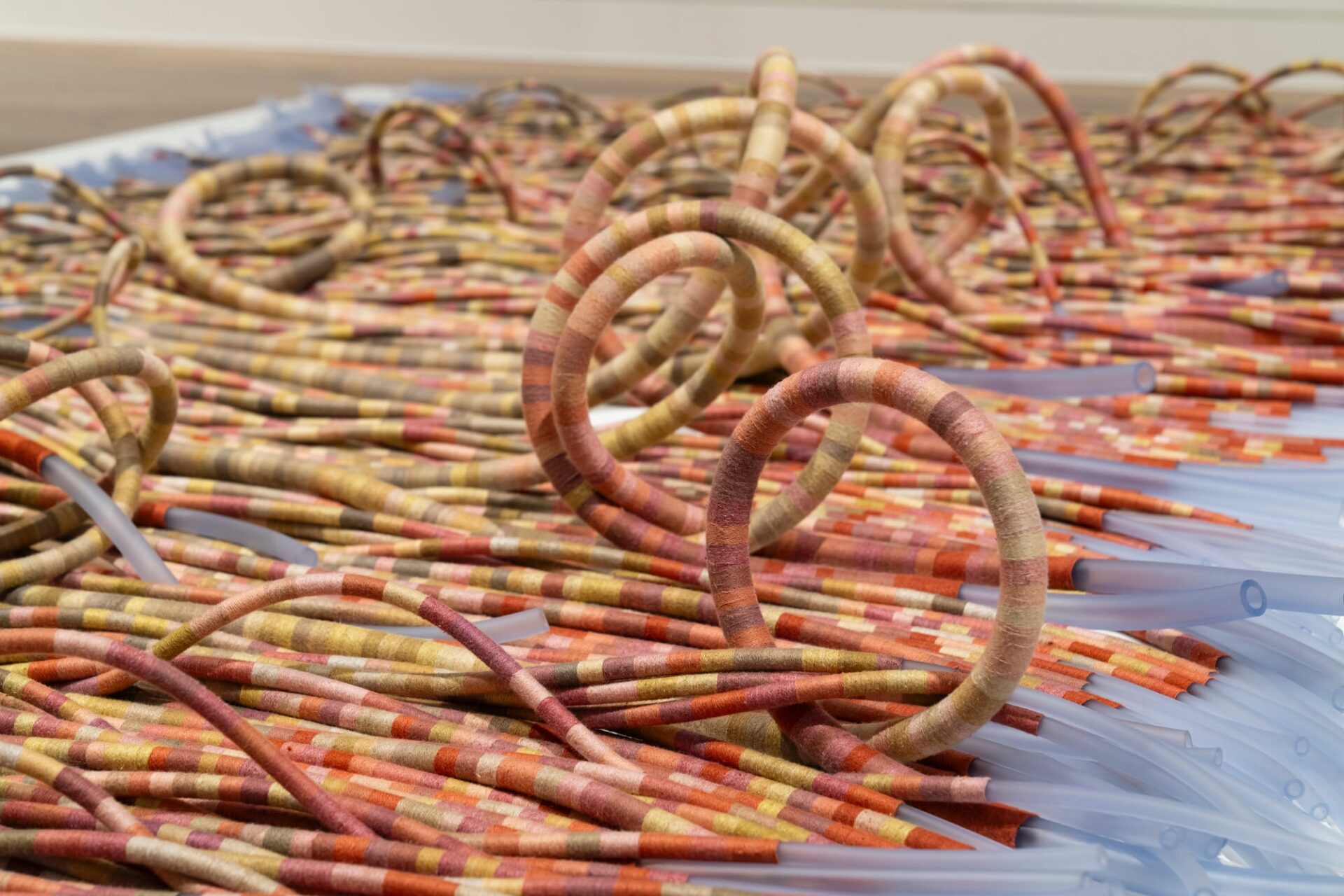This post was originally published on Colossal
Detail of “Bound (1.6).” All images © Tali Weinberg, shared with permission
Anyone who’s tried to untangle a ball of yarn understands that fibers have a habit of knotting in ways that can seem impossible to unwind. These twisting, interlaced qualities ground much of Tali Weinberg’s fiber-based work as she pulls at the individual threads of our changing climate, using abstract weavings and textile sculptures to explore the inextricable nature of the crisis and the necessity for human intervention.
The Illinois-based artist begins with data from the National Oceanic and Atmospheric Administration that she translates into visual works using organic and synthetic materials. “These weavings and coiled sculptures are not data visualizations,” Weinberg notes. “Rather, I use the data as a scaffold, choosing materials, patterns, and colors to evoke places and add the social-political dimensions of the climate crisis back into the story the data tells.”

Installation view of “Heat Waves/Water Falls” (2023)
“Heat Waves/Water Falls,” for example, wraps naturally dyed cotton threads around plastic medical tubing, which dangles from a horizontal pole. Made during 2023, the hottest year on record, the sculpture incorporates the annual average temperatures for 18 major river basins in the continental U.S., data that corresponds to the thread colors. It also tethers environmental health to that of people. The artist elaborates:
As the pollution from human life on land runs downstream, watersheds become one window into the interdependence of ecological and human health. While the plastic medical tubing is an expression of the buildup of toxic plastics in our bodies and waterways, wrapping and bundling these tubes by hand becomes an expression of care for our interconnected lives.
“Heat Waves/Water Falls” is one of about 30 works on view at Denver Botanic Gardens for Weinberg’s solo show, The Space Between Threads. The exhibition focuses on the ongoing Climate Datascapes series, which she began in 2015 to better understand the climate crisis and to add an emotional, embodied tenor to sterile, even abstract science. Today, Weinberg considers the series a way of “seeking out and re-weaving otherwise obscured relationships—relationships between climate change, water, extractive industry, illness, and displacement; between disparate places; between personal and communal loss; between corporeal and ecological bodies; and between art, science, and social change.”
If you’re in Denver, you can see The Space Between Threads through June 9. Find more from Weinberg on Instagram. You might also enjoy The Tempestry Project.

“Heat Waves/Water Falls” (2023)

“Heat Waves” (2023)

“Silt Study: Lower Mississippi River Basin” (2021)

Detail of “Silt Study: Arkansas White River Basin” (2021)

Installation view at Denver Botanic Gardens. Left wall: “Silt Studies” (2021). Back wall: “Fissures” (2018). Pedestal: “Bound (1.6)” (2017-2024)
Do stories and artists like this matter to you? Become a Colossal Member today and support independent arts publishing for as little as $5 per month. The article Tali Weinberg Entwines Human and Ecological Health with Climate Data Sculptures appeared first on Colossal.





0 Comments